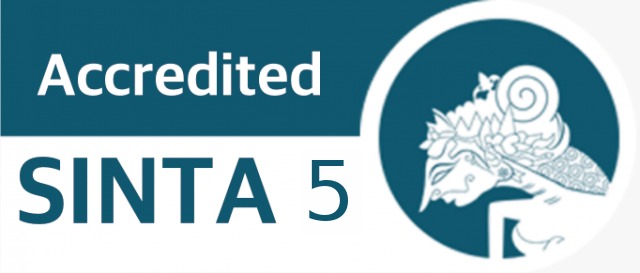Sistem Pendukung Keputusan Pemilihan Supplier Bahan Baku Digital Printing Dengan Metode Additive Ratio Assessment (ARAS)
DOI:
https://doi.org/10.61306/jnastek.v3i4.110Kata Kunci:
suplier, SPK, Bahan Baku, ARASAbstrak
Current developments in technology and business have an impact on human life, especially in the business world operating in the service sector. Business development that is quite rapid is business in the digital printing sector. Godean Digital Printing has quite valuable assets, namely raw material inventory, therefore inventory must be managed well. In production companies which are usually faced with many raw material problems, excess or lack of raw material quality values can disrupt the smoothness of the production process and the quality of the production itself at Godean Digital Printing. So with this, researchers conducted research on determining the supply of production raw materials at Godean Digital Printing. In this study, researchers tried to use the Additive Ratio Assessment method. Additive Ratio Assessment Method. So the researchers took the title "Decision Support System for Selection of Digital Printing Raw Materials Addictive Ratio Assessment Method". The results of this research are a web-based system that is used to select good raw materials, one of which is utilizing a digital printing raw material selection system using the Additive Ratio Assessment method. This is implemented to reduce errors in selecting raw materials according to the quality and type of materials to be used.
Unduhan
Referensi
K. Saharja and R. Gobal, “Pengaruh Waktu Proses Produksi Digital Printing Terhadap Kepuasan Konsumen Pengguna Produk Cetak,” J. Sains Komput. Inform. (J-SAKTI, vol. 5, no. 1, pp. 458–469, 2021.
H. Herawati and D. Mulyani, “Pengaruh Kualitas Bahan Baku Dan Proses Produksi Terhadap Kualitas Produk Pada Ud. Tahu Rosydi Puspan Maron Probolinggo,” UNEJ e-Proceeding, pp. 463–482, 2016.
R. A. S. P. - and Pratiwi Susanti, “Sistem Pendukung Keputusan Pemilihan Perumahan dengan Metode ARAS (Studi Kasus Kabupaten Ponorogo),” J. Sains dan Inform., vol. 8, no. 1, pp. 31–40, 2022, doi: 10.34128/jsi.v8i1.387. DOI: https://doi.org/10.34128/jsi.v8i1.387
A. S. Nadeak, “Penerapan Metode Aras ( Additive Ratio Assessment ) Dalam Penilaian Guru Terbaik,” Semin. Nas. Teknol. Komput. Sains, vol. 2, no. 2010, pp. 571–578, 2019.
S. R. Cholil and E. S. Prisiswo, “Sistem Pendukung Keputusan Seleksi Calon Karyawan Baru PT. Dawam Prima Perkasa Menggunakan Metode Aras Berbasis Web,” J. Rekayasa Sist. Ind., vol. 7, p. 107, 2020, doi: 10.25124/jrsi.v7i2.422. DOI: https://doi.org/10.25124/jrsi.v7i2.422
Y. Helianty and D. Anggraeni, “Pemilihan Supplier Bahan Baku Untuk meminimumkan biaya dengan menggunakan Metoda Analytical Hierarchy Process dan Taguchi Loss Function,” Ina. J. Ind. Qual. Eng., vol. 9, no. 1, pp. 97–107, 2021, doi: 10.34010/iqe.v9i1.4042. DOI: https://doi.org/10.34010/iqe.v9i1.4042
Unduhan
Diterbitkan
Cara Mengutip
Terbitan
Bagian
Lisensi
Hak Cipta (c) 2023 Nanang Imara Gumilar, Putry Wahyu Setyaningsih

Artikel ini berlisensiCreative Commons Attribution-ShareAlike 4.0 International License.
HAK CIPTA
Hak cipta atas artikel apapun pada Jurnal Nasional Teknologi Komputer (JNASTEK) dipegang penuh oleh penulisnya dibawah lisensi Creative Commons Attribution-ShareAlike 4.0 International License.
1. Penulis mengakui bahwa Jurnal Nasional Teknologi Komputer (JNASTEK) berhak sebagai yang mempublikasikan pertama kali dengan lisensi Creative Commons Attribution-ShareAlike 4.0 International License - CC BY-SA.
2. Penulis dapat memasukan tulisan secara terpisah, mengatur distribusi non-ekskulif dari naskah yang telah terbit di jurnal ini kedalam versi yang lain (misal: dikirim ke respository institusi penulis, publikasi kedalam buku, dll), dengan mengakui bahwa naskah telah terbit pertama kali pada Jurnal Nasional Teknologi Komputer (JNASTEK).
LISENSI
Jurnal Nasional Teknologi Komputer (JNASTEK) diterbitkan berdasarkan ketentuan Creative Commons Attribution-ShareAlike 4.0 International License. Lisensi ini mengizinkan setiap orang untuk menyalin dan menyebarluaskan kembali materi ini dalam bentuk atau format apapun, menggubah, mengubah, dan membuat turunan dari materi ini untuk kepentingan apapun, termasuk kepentingan komersial, selama mereka mencantumkan kredit kepada Penulis atas ciptaan asli.




















